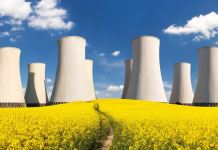The global industry in the 21st century began to develop rapidly. This was facilitated by a lot of scientific discovery, new effective methods of production of alternative fuels, improving the quality of the materials. Stimulated to the fact that decreasing fast pace of the world reserves of natural resources of which produce traditional fuel, and the poor condition of the whole ecology of the planet. The production of dimethyl ether is one of the more promising directions of development of alternative fuels and raw materials. Dimethyl ether (other names wood ether, methyl ester) has the chemical formula Н3С-О-СН3. He refers to simple esters with the characteristic ether odor, it is colorless. Dimethyl ether has greater scope. He first began to be used in the 20th century as propylene in aerosol containers. Today it is widely used in the field of fuels for engines. In this area it is used as a standalone fuel for diesel engines, and as a component of fuel.
Dimethyl ether is produced from syngas. Today it has become a priority the production of synthesis gas from organic materials. The organic raw material can be coal, which is gasified under the ground, and recycling of solid and liquid waste by method of conversion, and also gasification.
Production technology of dimethyl ether is implemented by conversion of the synthesis gas in two ways:
– Classical synthesis, consisting of two phases by catalytic dehydration of methanol. The entire process takes place at low temperature(260–300 º C) at a pressure of 5-10 MPa, using aluminum oxide and other catalysts of dehydration.
– Direct synthesis. This process is, on the contrary, in one reaction space, generating a large amount of heat energy. Therefore, the safety and health system the heat constantly need to divert from the equipment. Operating temperature in the range 240–280º C at an operating pressure of 3–10 MPa. This direct synthesis process of dimethyl ether from synthesis gas is made possible only when we have developed a special catalyst. The direct synthesis has the advantage that the conversion of the synthesis gas is much more efficient (90% vs 10-15). This method does not involve conduct multiple return gas through the catalyst. When all the existing advantages of this method of obtaining dimethyl ether from synthesis gas is rather complex. He received widespread commercial use, it is necessary in the production process to optimize the thermodynamic component, and also do not leave without attention the issue of energy efficiency and environment. However, the projected production of direct dimethyl ether synthesis is economically more beneficial because they require less operating and capital costs.
Dimethyl ether has a good future because it is environmentally friendly, due to the fact that the combustion in the environment, no emissions of sulphur and other harmful substances. DME diesel has a higher cetane number (>55) than conventional diesel. Due to the oxygen content in its composition has a greater oxidative capacity than that of conventional fuel.























